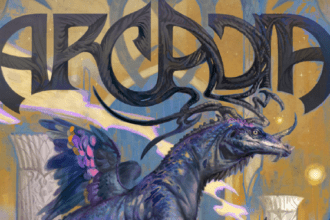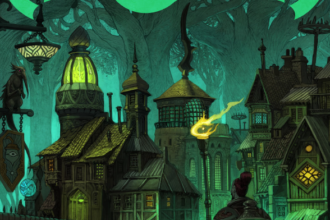Arcadia Issue 5 Breakdown
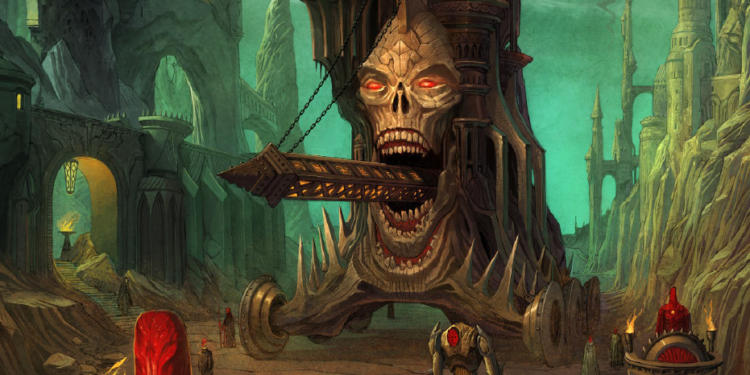
All art belongs to MCDM
These curses are all made to resist the boring remove curse spell and give new twists to your campaign. They go all the way from wacky to scary, all of them resembling curses we have already read or seen in other stories. They all are made to easily create adventure hooks, give examples on how the curse could be cast, and how to remove them. Additionally, these curses come with side box text that lets the DM know that these curses might not work for every player group and that they should check on their players to see if they don’t feel uncomfortable having them in their games. I’ve read other stuff from Leon in the past and they don’t disappoint! This is definitely something to look forward to.
Curse of the Betrayed
Similar to how some of the effects on the Madness table from the DMG works, this curse causes the cursed creature to have their personality change. They may become extremely insecure, distrust their party members or believe themselves better than the rest, and some other similar options from a d10 table. These feelings stack on each other every day if you fail low DC saving throws, potentially making the character very dangerous to keep around. Additionally, there is an additional effect that can consume the PC’s mind if they fail by 5 or more. I won’t spoil it, but all together these effects create a ticking bomb of a character. After some time, the PCs will need to make an important decision: leave their friend behind, or start a story arc to break their curse!
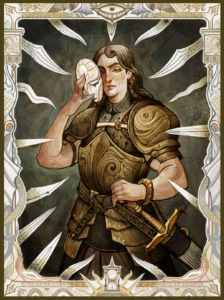
Curse of Cassandra
This curse grants clairvoyance to the cursed target, but has no one believe them. In a way it’s more of a curse for the entire party, which can lead to very fun and tense moments. The curse comes with a table of things that are predicted by the affected creature and the span of days in which the foreseen event will take place. I definitely love this because if you have a good enough player group, every one is going to be extremely scared of the foreseen events but will have to act they don’t believe will happen. Out of all the curses, it might be the most difficult to make work, but possibly the more fun to add to a campaign.
Curse of the Living Dead
The classic curse that transcurs in about half of the zombie movies. A zone is cursed and people rise from the dead at a particular time of the day to eat the living. Dead player characters and pets reanimate as well. In fact, there is a section that stats out a zombie pet, just in case you want your own Frankenweenie as a pet (what a weird movie that was). There’s also tips on how to create flesh golems out of this curse that are undead instead of constructs. I love the fact that the curse gives enough tips for it to be as much of a danger for Tier 1 PCs as it could be for a Tier 3 party.
Curse of the Sordino
Totally made to belong in a Ravenloft kind of setting or spooky place in your world, the curse of the sordino makes music in an area nonexistent. Laughter, singings, rhymes, any kind of emotion is dulled out or completely shushed while this curse affects the vecinity. I’ve seen these tons of times in media but I can’t come out with any good example at the moment. The great thing about this is that it easily makes a city interesting and gives the player characters an adventure hook to save the city from the dull life they have been trapped in.
Curse of the Watchers
This one is more of a cursed item than a curse per se. An item has become cursed and when used in battle it has crows appear and fly close to it. As the PCs keep using the item more crows will appear, until a random roll causes the item to have all crows attack the user at once. Even though it is really cool, my players would immediately throw out the item the first time the crows attack, knowing it is cursed. There is a boxed text that gives some tips on how to make the effects of the item less obvious, but the first time the crows attack they’ll know something is wrong with it. The curse comes with a stat block for a flock of crows to make the DM’s job easier.
Slow Polymorph
The slow polymorph curse makes the player character slowly become a monstrosity. Day by day they need to pass saving throws or gain monstrous parts. These do come with as many benefits as they do have drawbacks, like gaining two extra legs, but being able to move faster. As time goes on, the character slowly becomes something that doesn’t even resemble a humanoid being, which may cause people and/or monsters to be scared and attack the PC on sight. This curse looks like a really fun one to play with, as the low DC makes it so it’s very difficult for a player character to gain new body parts or have them change, making them slowly become a monster.
This article starts by indicating that greed should not be associated to evil, as this sin could lead to all sorts of purposes. A god of avarice is stated as well as an example for DMs to add to their game or to base their own god creation on. I like that it also comes with its own Holy day that you can add to your game.
These subclasses also come with 3 retainers, each as a mini version of the subclasses you can use with the Strongholds & Followers rules. Lastly, there’s a cleric from the avarice domain NPC villain that is absolutely hateable and that you should add to your game.
Cleric: Avarice Domain
This cleric is all about accumulating wealth, be it for a good or bad motive, or no motivation other than greed itself. Its core ability, being the subclass feature they gain at level one, allows replicating effects of spells you cast on yourself or on a second object, maintaining concentration for both if needed. This allows for many interesting playstyles and tactics, but nothing that the sorcerer with the twinned spell metamagic couldn’t do before, so I wouldn’t worry much about balance issues. Additionally, its channel divinity stuns enemies by showing them what they want the most. This can create great RP opportunities as player characters get to know that which an enemy finds important, and can exploit it.
As the cleric grows in level, they get the ability to cast on themselves spells that are cast on enemies. Enemies don’t usually have spells, and if they do, they rarely use them to empower themselves, so I find this feature extremely situational. Lastly, its high-level ability allows you to do the spell replication and ignoring concentration once per long rest. In the right hands, this can be very powerful, but it seems a bit dull to be the ultimate ability.
Druid: Circle of the Gilded
This druid cast their spells through gems they incorporate into their body. That single concept just sold me on this subclass. On top of that, this druid uses Wild Shape as a currency to empower its features, which is something I love seeing in druids. They are made to be melee combatants, as their weapon attacks get empowered by the elemental magic from the gems, and at level 14 they gain benefits for going melee such as higher AC and dealing damage to nearby enemies that attack them.
Druids from the circle of the gilded transform the spell damage from spells they cast or receive into an elemental one of their choice. This depends on the kind of gem the druid decides on using. At level 6, they get to be resistant to the damage type of their gem, making changing the element type of attacks against the druid a great combo. Lastly, at level 12 they get the ability to shoot an elemental laser beam up to 120ft.
Paladin: Oath of Acquisitions
Paladins with this oath are all about agreements and negotiations, leaning towards the evil spectrum of alingnments. They are master manipulators, illusionists, and enchanters. Their channel divinities help make negotiations easier by granting advantage on charisma checks, and make others follow your commands with ease by imposing disadvantage on saves against your enchantment spells. One of their spells can be found in Arcadia Issue 3, but it indicates a replacement spell in case you don’t have it.
Paladins of this oath can command those nearby to be ready for attacks, causing enemies to have disadvantage on attacks against closeby allies. Additionally, these paladins can do bonus damage on charmed creatures. In practice, this is extremely useful to initiate combat, but in the midst of it, it will rarely be used, as it is always better to have a charmed creature on your side than to break the charm from them by attacking. Last but not least, at level 20 paladins can become an ultimate paladin guided by their god, making creatures who attack them get charmed if these enemies fail the save. Combine this with the ability I just described and you’ve got an extremely powerful moveset. While extremely powerful, it is a lvl 20 ability, so it’s normal for it to be this op.
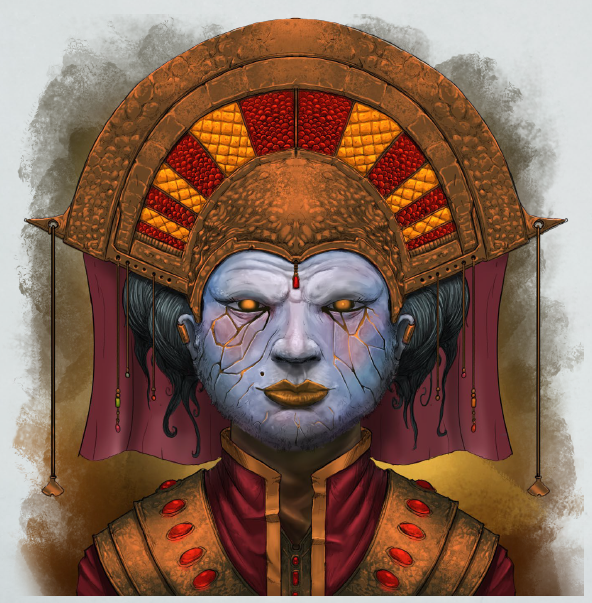
This article starts with a letter from the wizard Alabaster, the creator from these spells. It is beautifully written with a handwriting sort of font, but includes a link to a plain text version, which I always appreciate for accessibility purposes. These spells range through many of the schools of magic and do all sort of things, with notes from Alabaster for each of them, that makes a fun read.
- Alabaster’s Adaption (6th level): This spell changes its target into a creature readied to move through the underdark by giving them all sorts of abilities. This includes the possibility of sweatting acid, which damages the target as well as those around them
- It’s a weird spell. I can see how it can be useful to move through the underdark and I love it from a story standpoint, but the acid sweating I don’t know how useful it can end up becoming.
- Alabaster’s Adjacent Acquisition(1st level): A tiny object you think of within 30ft teleports to your hand, but there’s a 50% chance of failure and getting some other thing
- I can’t see that many great uses for this spell. It’s like a mage hand except it is not a cantrip. It might be great to steal a mcguffin from an enemy, but that is highly situational. It can be great for shenanigans though.
- Animate Echoes (3rd level): Similar to Return of the Obra Dinn, or Batman’s detective mode you scan an area and can see what occured in it in the past 24 hours.
- I like that it is limited to 24 hours, making it great but not overpowered for investigations. I can see this used to make great reveals such as the BBEG being the one that killed a friendly NPC the PCs find dead.
- Compelling Propulsion (2nd level): As a reaction you can propulsate those who get next to you far away making them possibly crash against other things and fall prone.
- Besides the extremely comedic aspect of the spell that just yeets enemies away from you, this is a great spell that you may consider using over Shield.
- Gaze of Venom (6th level): The caster’s eyes turn venom colored, and those who meet their gaze receive poison damage and may end up poisoned.
- If you want to be a medusa, this isn’t that far from it. I really like it thematically. If a mirror is used against the caster, the caster takes the damage, just like with medusas.
- Realize Image (9th level): Briefly transform an illusion into the real thing. If it is a creature it gets that creature’s stat block.
- Being a 9th level spell there’s only one single use of this per long rest, so you better make good use of it. Don’t make any illusion come to reality, but think well before using it. I really like that tactical aspect of it.
- If you want to waste the spell because you can by making an illusory spool come to reality you can do that as well.
- Scryspike (3rd level): You create a dagger that can be used to destroy magical sensors such as the scrying orb. Dealing damage to them destroy these sensors and deals damage to that who casted the sensor.
- I don’t see much use to this unless you know for certain that someone is following your trail or observing you. It is amazing to send a message to the traspasser though. “Stop fuc*ing with us!”
- Shadowslip (2nd level): You become one with your shadow and can move through the tiniest of spaces sneakily. This does come with its disadvantages if attacked.
- This is basically a lvl2 version of gaseous form. It has the benefits of being low level, but having your shadow destroyed can be very dangerous.
- Wielding (1st level): You have a nearby weapon go to your hand. Then, you can use it with your spellcasting ability to make attacks. If you use it to remove a weapon from an enemy they have to make an Athletics check.
- For those spellcasters that want to go melee, having the chance of using their spellcasting ability is amazing. I really like that you can steal weapons from your enemies as well, even though they will probably be good at Athletics if they are carrying a melee weapon.
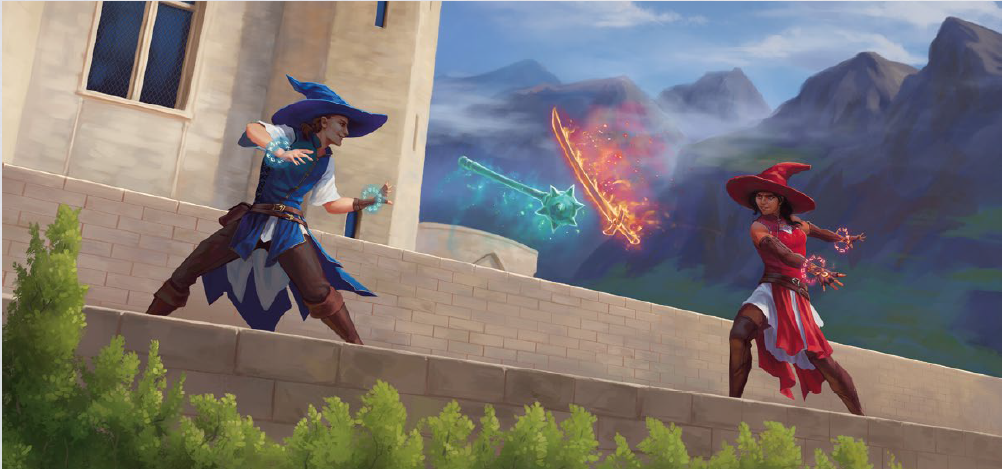
Final thoughts
Being a forever DM, I don’t think I might get to use the subclasses, even though they certainly look interesting. I might offer them to my players as they don’t seem unbalanced, and can be used for villains as well. As regards the curses, I will surely find a way to place at least one of them into my campaigns. I really like them! Lastly, the spells have their up and lows, but all in all they seem like great additions that might end up in my games.
In conclusion, this issue of Arcadia was a pretty great one. Nothing out of it truly stood out for me, but everything that was offered in it is extremely cool nonetheless. I look forward to seeing what other things MCDM has in store for us!




